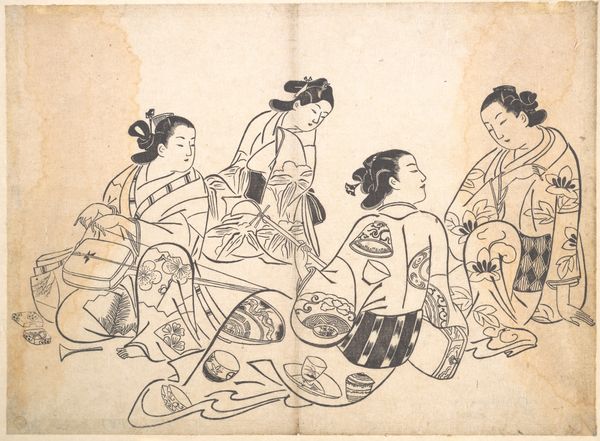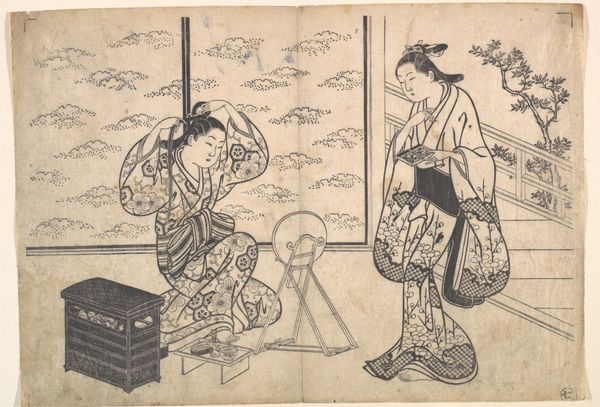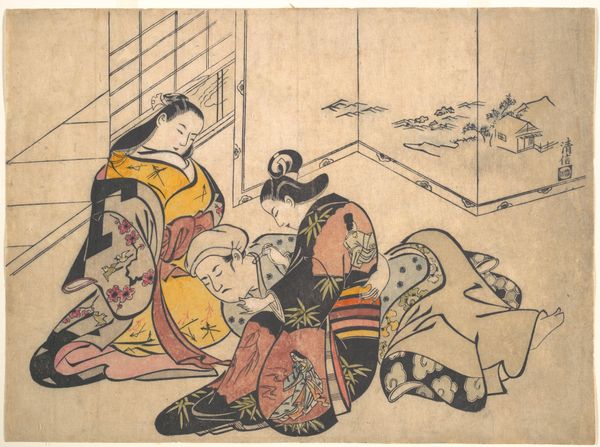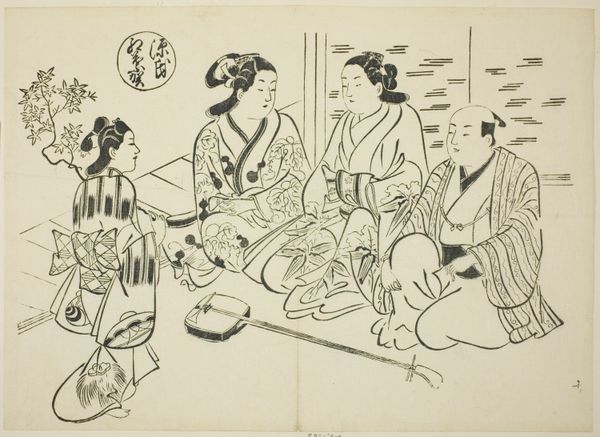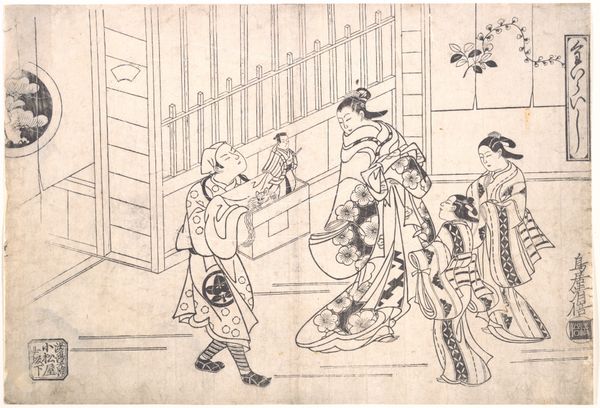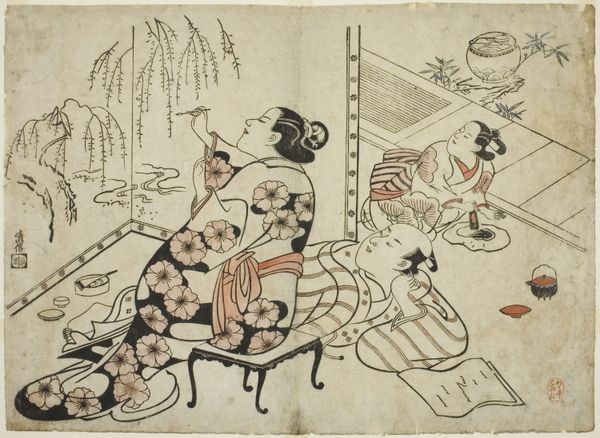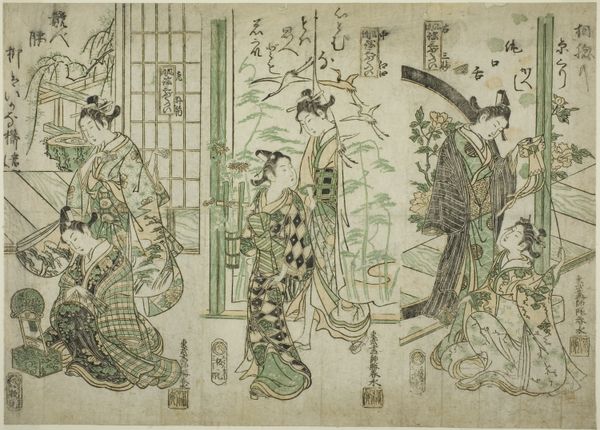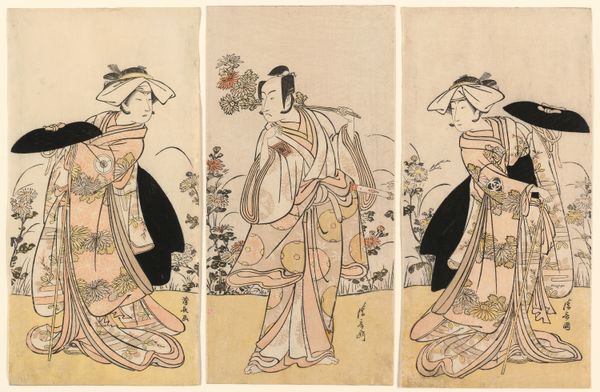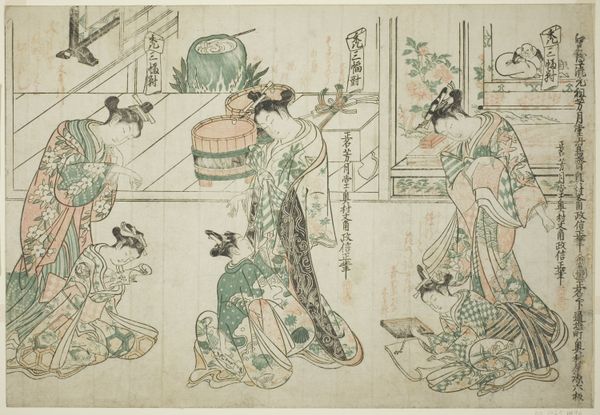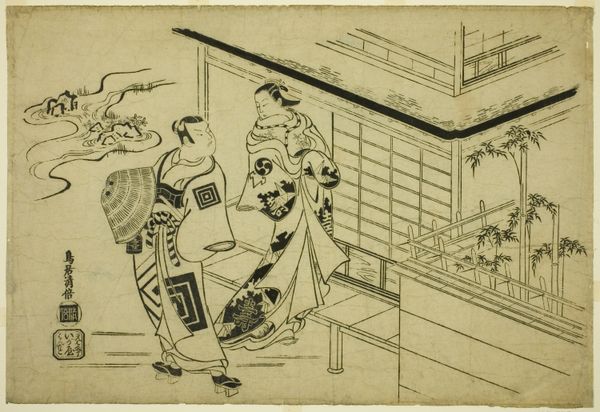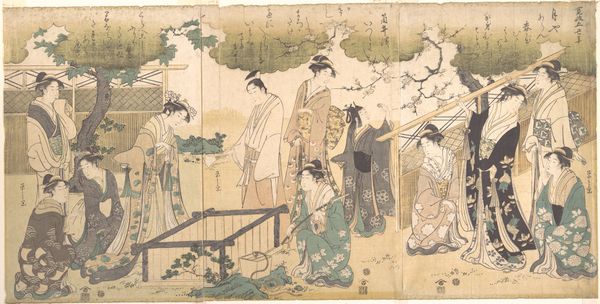
One Hundred Women Classified According to their Rank 1729
0:00
0:00
drawing, paper, ink-on-paper, ink
#
drawing
#
ink drawing
#
pen sketch
#
book
#
asian-art
#
ukiyo-e
#
figuration
#
paper
#
ink-on-paper
#
ink
#
orientalism
#
line
#
genre-painting
Dimensions: 9 3/16 × 334 in. (23.34 × 848.36 cm) (image)9 3/16 × 362 5/8 in. (23.34 × 921.07 cm) (mount, without roller)
Copyright: Public Domain
This long horizontal scroll, made by Nishikawa Sukenobu, depicts women in various domestic settings, their activities and attire subtly hinting at their social standing. The image is dominated by the recurring motif of women engaged in different tasks, such as spinning thread, reading, or writing. These motifs evoke the traditional roles ascribed to women in Edo period Japan and, like the Fates of ancient Greece, are a reminder of the power of destiny and the cycles of life. Consider the wheel, a universal symbol present here. It is not merely a tool for spinning but also a metaphor for the cyclical nature of existence itself, akin to the wheel of dharma in Buddhism. The women are unconsciously tied to the wheel, their daily actions, their identities, spun into the grand tapestry of time. Through the arrangement of the scroll, Sukenobu presents us not just with images of women, but with a mirror reflecting the perpetual dance of human existence, where memory and tradition continuously reshape our present.
Comments
minneapolisinstituteofart almost 2 years ago
⋮
In this handscroll, Nishikawa Sukenobu depicted women of varying vocations and ranks in their daily dress. Beginning with an empress and her servants, his book offers a glimpse into the range of roles women played in Edo-period Japan. Throughout the handscroll, he shows women employing literacy in their work: a poet composes a poem; a doctor measures out medication doses while consulting a book; a scribe holds her brush at the ready. This work is a rare example of how the content of printed books could circulate: this work consists of pages from a printed book, which were hand copied and bound as a book, that was then remounted as a handscroll. The practice of copying books by hand was a way for readers who could not, for some reason, obtain the printed original. Hand-copied versions of texts are more common, while hand-copied illustrated books, such as the pages in this handscroll, are relatively uncommon. A note at the end of the handscroll indicates that the copying was done in 1729, six years after the publication of the original book.
Join the conversation
Join millions of artists and users on Artera today and experience the ultimate creative platform.
